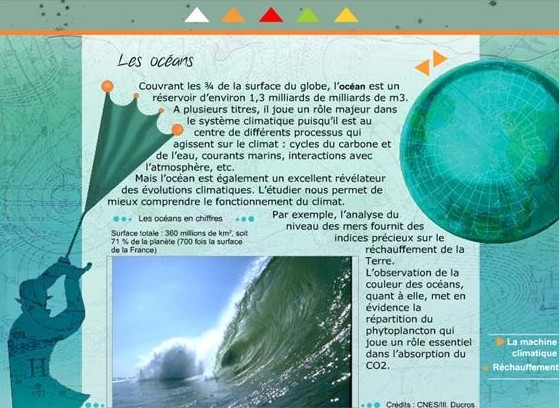10 November 2005
Clouds, winds, ocean currents and satellites … all in one place
How does the Gulf Stream work? Is the greenhouse effect always harmful? And what about clouds? How can we know whether they are shielding us from radiation?
Earth’s climate system is extremely complex, driven by constant interactions between its atmosphere, oceans, cryosphere, land surfaces and biosphere.
This vast machine draws its energy from regulating and perturbing energy exchanges.
This vast machine draws its energy from regulating and perturbing energy exchanges.
Identifying the key components underlying the climate system; showing how signs of global warming are detected from space; understanding atmospheric and oceanic processes shaping climate; and explaining how satellite data are shedding new light on global warming issues—these are just some of the objectives of the new website, copiously illustrated with videos, pictures and animations.


Studying climate - a priority for sustainable development

Oceanography, atmospheric research and meteorology are key areas where space technologies are making a big contribution to climatology. Many CNES programmes are devoted to Earth observation for these purposes.

This launch was an opportunity for CNES to review the status of knowledge about climate, and look at how space technologies can be used, now and in the future, to address global warming issues.
In line with its stance on sustainable development, the agency is today extending its efforts to investigate climate concerns that will have a vital bearing on the future of our planet.
To this end, raising awareness of sustainable development challenges and day-to-day applications of space is an integral part of CNES’s outreach missions.
